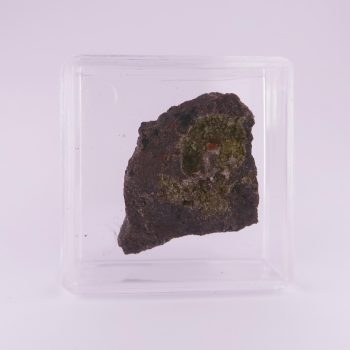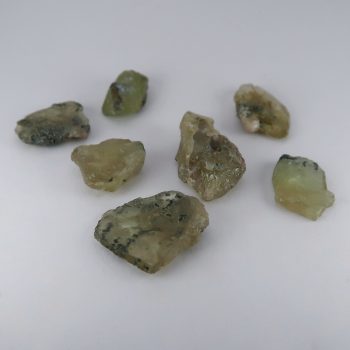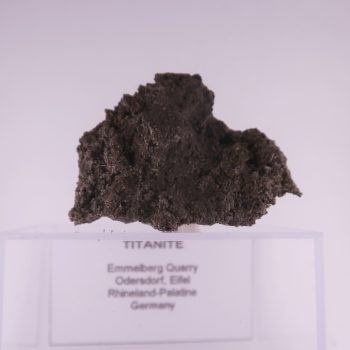Sphene / Titanite
Titanite, otherwise known as Sphene, is an interesting mineral which can occur in a few different colours. The crystals often occur in a wedge shape, and have a high lustre due to their high refractive index.
Titanite is a minor ore of Titanium and is also sometimes used for jewellery making.
Showing all 3 results
-

Leucite and Titanite from Kahlenberg, Germany
£5.00 -

Sphene mineral specimens
Price range: £3.00 through £7.50 -

Titanite from Emmelberg, Germany
£10.00
Appearance, Uses and History
Titanite is a little confusingly named. Prior to 1982, Sphene was the more commonly used name, but in 1982 the International Mineral Association chose the name ‘Titanite’ as the official name.
However, ‘Sphene’ is still a widely used name, and is sometimes used to refer to gemstone quality Titanite.
Titanite has high lustre and causes brilliant colours and interesting light forms – it is also highly pleochroic. However, it is quite soft, and quite brittle – so its use for jewellery is somewhat limited, although pieces are still faceted.
In industry, it is used as a form of Titanium Dioxide.
Locales
Specimens of Titanite can be found all around the world, although gem quality deposits are rarer.
Good quality specimens can be found in Afghanistan, Australia, Austria, Brazil, Canada, Germany, Italy, Madagascar, Morocco, Namibia, Norway, Pakistan, Portugal, Spain, Switzerland, Tanzania, and the USA.
Mineralogy
Hazards and Warnings
Almost all rocks, minerals (and, frankly, almost all other substances on earth) can produce toxic dust when cutting, which can cause serious respiratory conditions including silicosis.
When cutting or polishing rocks, minerals, shells, etc, all work should be done wet to minimise the dust, and a suitable respirator or extraction system should be used.
Translations
Arabic:
- تيتانيت
Hindi:
Portuguese:
- titanita
- esfeno
Bengali:
Indonesian:
Punjabi:
English:
- titanite
- sphene
Italian:
Russian:
- титанит
French:
- sphène
Japanese:
- スフェーン
- タイタナイト
Spanish:
- titanita
- esfeno
German:
- Titanit
- Sphen
Korean:
- 티타 나이트
Thai:
Gujurati:
- ટાઇટેનાઇટ
Mandarin and Traditional Chinese:
Urdu:
Further Reading / External Links
- https://en.wikipedia.org/wiki/Titanite
- https://www.mindat.org/min-3977.html
- https://www.minerals.net/mineral/titanite.aspx
- https://www.gemsociety.org/article/sphene-jewelry-and-gemstone-information/
- https://geologyscience.com/minerals/titanite/
- http://www.science.smith.edu/geosciences/petrology/petrography/titanite/titanite.html
- https://www.minerals.net/gemstone/sphene_gemstone.aspx
